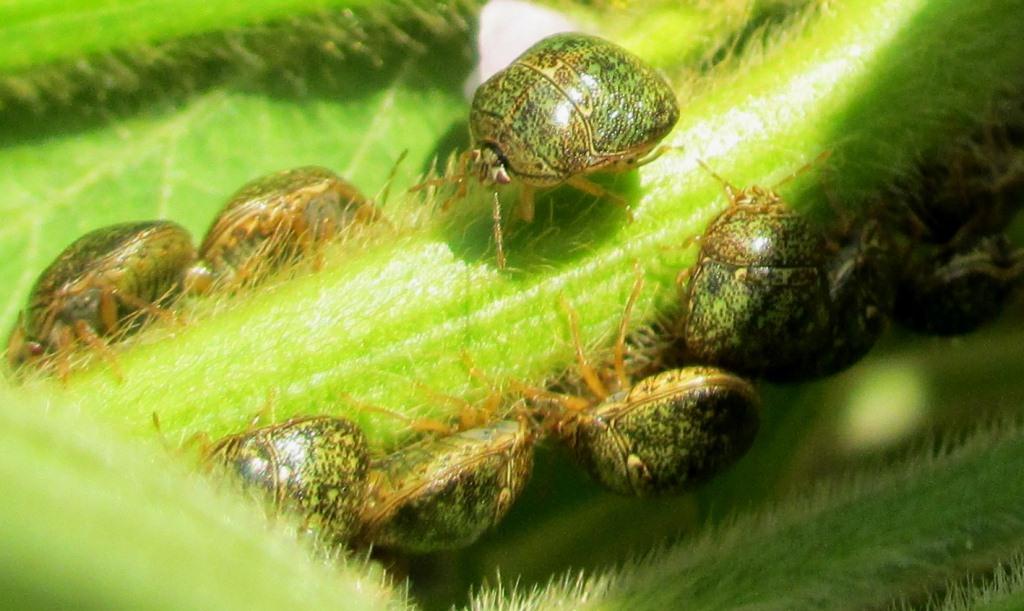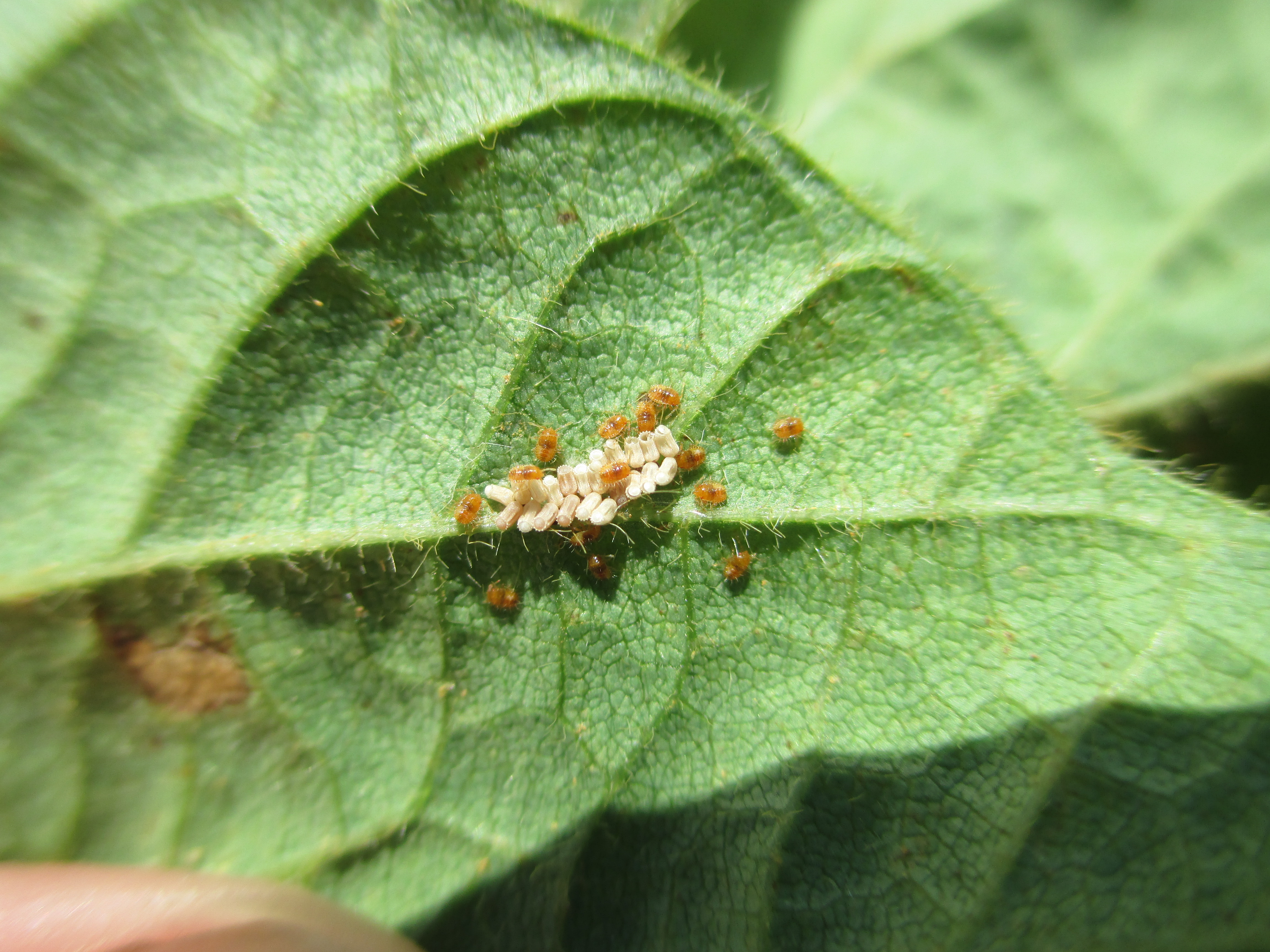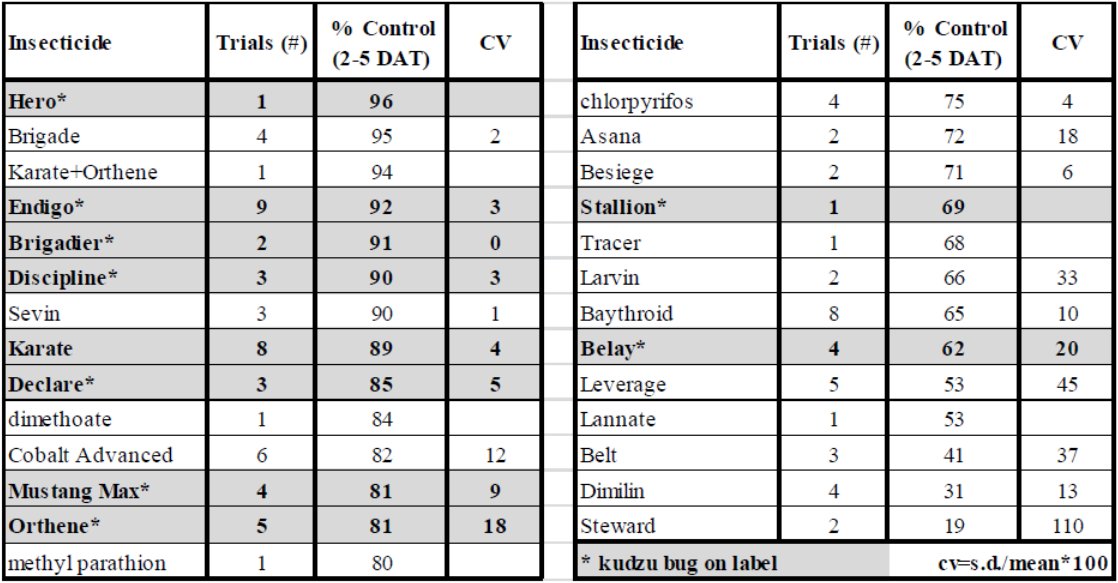
Kudzu Bugs were found feeding on early planted soybean plots this week in Jackson County. Credit: Doug Mayo
Three Kudzu Bug (Megacopta cribraria) infestations have been identified in Jackson County this year, and this week was the first case found on soybean.
The insects were spotted in the very early planted soybean plots (late February) which are used to monitor for Asain Soybean Rust. Since Kudzu bugs are typically seen on soybeans in the flowering/pod forming stages, it is not likely any commercial fields have been infested yet. However, these insects can move quickly into soybean fields from neighboring kudzu or other infestation sites.
The Kudzu Bug is a new invasive pest from Asia which feeds on certain legume plants including kudzu, soybean, wisteria, and some lima beans.
The Kudzu Bug is olive green with brown speckling and is about the size of an eraser on a pencil. It lays white eggs in two rows on the underside of plant leaves (See picture below).

First instar Kudzu Bugs are shown, having recently hatched from their white eggs on the underside of a soybean leaflet. Credit: Josh Thompson
The adult insects usually feed on plant stems and leaf veins where they suck plant juices directly from the plants. Soybean plants with heavy feeding typically look wilted, similar to drought stress. They are usually found in the highest numbers near field edges.
The sheer number of kudzu bugs appearing in an infested field can cause a soybean grower concern. Yield data from Georgia and South Carolina have shown the average yield reduction from kudzu bug is 18 percent, but higher levels of reduction have been observed.
The key to determining whether to spray insecticides or not is the presence of immature (nymph) Kudzu Bugs. It is recommended sampling be performed between the R1 through R7 stages (flowering through pod maturity). Sampling should be conducted with a 15 inch sweep net at several locations in a field. Contact your local UF/IFAS County Extension Office for assistance in sampling. If an average of one nymph is found per sweep, an insecticide spray is warranted.
Pyrethroid insecticides have been shown to be effective at controlling Kudzu Bugs. Keep in mind applying these chemicals will likely reduce beneficial insect populations, which could increase the risk of other pest later in the season. See the table below for a list of insecticides and their effectiveness.
For more information on Kudzu Bug identification or control in soybean, visit kudzubug.org or contact Josh Thompson at UF/IFAS Jackson County Extension Service.

This table from kudzubug.org shows the efficacy of specific insecticides on Kudzu Bug control. Be sure to follow all label instructions when using these products.
- Carinata Starting to Come Up in Jackson County - December 12, 2014
- Wheat Production Considerations for 2014-2015 - November 10, 2014
- Peanut and Cotton Harvest Video 2014 - November 10, 2014
